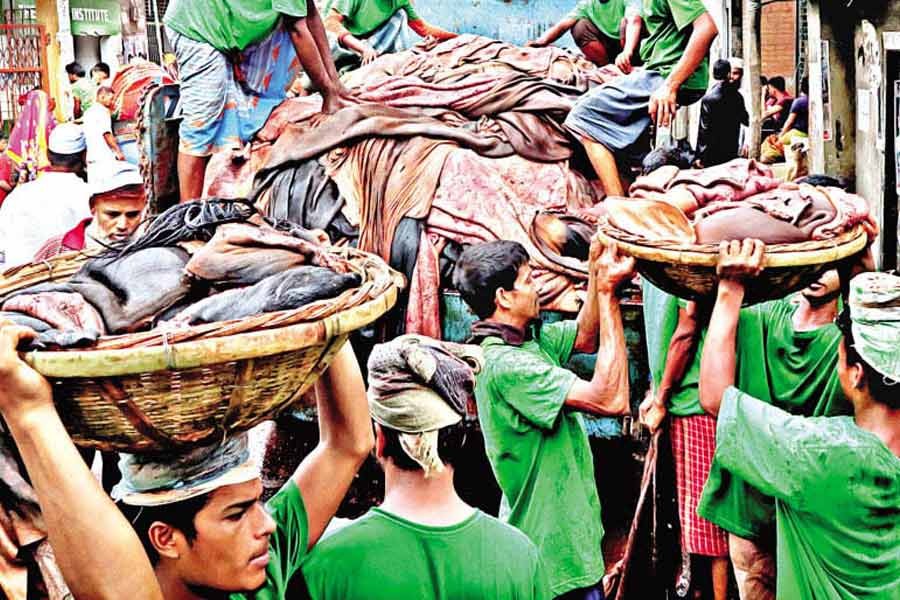The Eid-ul-Azha raw hide market appears to be faring better than the previous year. Reports say, at a raw hide hub of the country near the Savar area, raw cowhides measuring 24 sq ft were being sold at Tk 800 per piece, while those of the 20-22 sq ft size, were sold at Tk 600 apiece. Goat skins, on the other hand, were being sold from Tk 10 to Tk 20 per piece. At Posta, another centre of rawhide business in the old part of the city, cowhides of smaller size were seen to be selling between Tk 200 and Tk 250 per piece, while those of medium size were selling between Tk 300 and Tk 750 depending on the quality of the hides. The large-size cowhides, on the other hand, were being sold between Tk 800 and Tk 1150 apiece.
This definitely marks an improvement of the rawhide market over the last few years. Even though the rawhide sellers got better price for their goods both within and outside the capital city, the prices at which rawhide has been selling during this Eid-ul-Azha has still been below the rates fixed last week by the commerce ministry during a meeting with representatives of the hide merchants. Notably, at the said meeting, the price of per square foot of salted cowhide was set between Tk 47 and Tk 52 within the capital city, while outside the city it would range from Tk 40 to Tk 44. Similarly, male goat's skin, according to that standard, was to be sold between Tk 18 and Tk 20 per square foot and that of nanny goat's between Tk 12 and Tk 14.
The rates of rawhide price so fixed by the government for this time, however, were an increase by Tk 7.0 per square foot for cowhide and Tk 3.0 for every square foot of goat skin. But as it happens more often than not, the rawhide dealers hardly ever get the prices set by the government. Sadly though, it is happening at a time when the nation is witnessing an unprecedented rise in the price of every essential commodity under the sun. The only exception is the post-Eid-ul-Azha rawhide price.
One may, at this point, recall the disaster that the rawhide sellers faced three years back (in 2019) when the price of rawhide was so low and unwillingness of the tanners and stockists to buy rawhide was so great that rawhide sellers in different parts of the country had to throw their cargoes (rawhide) into garbage dumps or bury those under the ground. Why was it so? The tannery owners and finished leather merchants have their reasons that sounds cogent. In fact, the big brands of European Union (EU) and the USA are showing reluctance to buy Bangladeshi leather. That is because these overseas buyers think there is a severe pollution problem at the Savar Tannery Industrial Estate at Hemayetpur near Dhaka. Under the circumstances, China, though it pays lower price for leather compared to the EU and the US, has now emerged as the biggest buyer of leather from Bangladesh. Still in FY 22, the export of leather and leather goods increased by 32.25 per cent, adding about US$1.24 billion to the country's foreign exchange reserve. As during the Eid-ul-Azha, half of the country's total animal hide is produced (more than 10 million pieces this time), policymakers need to consider it with the topmost priority. The rawhide dealers must get the highest value for their merchandise.


